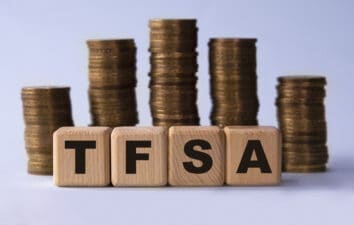Here at Motley Fool, we tend to recommend investors take a long-term approach to investing. But what if you’re already retired? That’s cash you could need at any time. While long-term investing should still be part of your approach, there are certainly ways to also use your investments to supplement income.
Today, I am going to show you how to use passive income stocks to both grow your wealth, and create tax-free income throughout your retirement.
TFSA: For retirement too
Many Canadians may forget that the Tax-Free Savings Account (TFSA) was meant as a retirement tool when introduced in 2009. Unlike the RRSP, you can withdraw your TFSA funds at any time tax-free and without penalty, whereas although RRSP contributions are tax deductible, withdrawals are taxed as income unless used for a first home or education and the funds must be withdrawn by the age of 71.
It’s here that retirees should start when aiming for tax-free cash from passive income stocks. You can buy up companies without needing to worry that you will not be able to take out the cash if you really need it. Furthermore, you can use that cash to create even more wealth in the years to come by reinvesting your dividends.
Create a passive income portfolio
If you want to create a portfolio of passive income stocks, I would then recommend looking at a few options. You want global companies that will do well year after year, and not suddenly fall during a downturn. That includes the stocks trading down in the current market downturn. Furthermore, you want to make sure dividends are consistently paid out.
All it takes is finding blue-chip companies. These are companies that have been around for decades, and consistently generate income for their stockholders. The Big Six Banks are strong choices, as are energy companies, financial institutions, insurance providers, and global exchange-traded funds.
If it were me, here are the three I would start with. For a Big Six Bank, I’d pick up Canadian Imperial Bank of Commerce (TSX:CM)(NYSE:CM) as a top dividend provider. I would then look at the BMO Global Infrastructure Index ETF (TSX:ZGI) for global income from a dividend that will be supported even during a downturn. Finally, I’d look at Great-West Lifeco (TSX:GWO) as an insurance provider that continues to expand across the globe, with a base in Canada.
I left out energy stocks because right now they remain far too volatile. With the shift to clean energy and away from oil and gas, this simply isn’t the stable choice it once was for retirees.
Making wealth
Now let’s say you were able to put $50,000 in total into all three of these passive income stocks. You can then look at the performance history of each, and determine the compound annual growth rate (CAGR) in both share price and dividends.
Perhaps you decide to let ZGI and GWO grow for the next decade, and take in the passive income from CIBC. In that case, if CIBC shares continue to grow at a CAGR of 11% in the next decade, you will collect $904 in income each year. In another decade, you could have shares worth a total of $47,046 without investing another dime.
As for ZGI and GWO, let’s say you take the long-term approach and reinvest dividends. For these passive income stocks, ZGI offers a CAGR of 11.13% and GWO 8.69%. Their dividends have also grown at a CAGR of 8.57% and 4.79%, respectively. So if you invested the same amount and reinvested dividends, you could have shares worth $183,574 for ZGI and $191,704 for GWO. That’s a total of $422,324 in your TFSA from these passive income stocks, with at least $9,040 collected in dividends.








